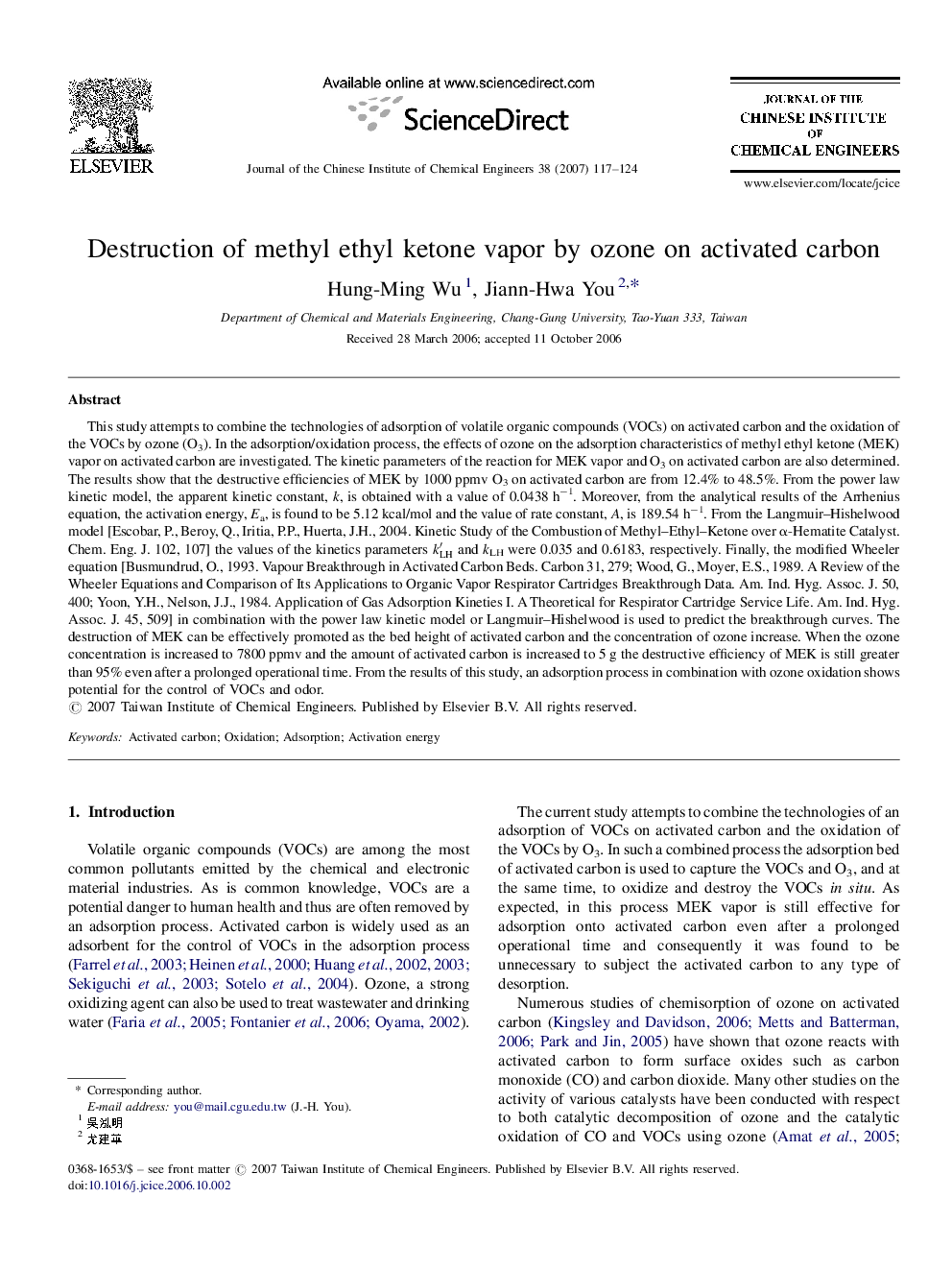| Article ID | Journal | Published Year | Pages | File Type |
|---|---|---|---|---|
| 217744 | Journal of the Chinese Institute of Chemical Engineers | 2007 | 8 Pages |
This study attempts to combine the technologies of adsorption of volatile organic compounds (VOCs) on activated carbon and the oxidation of the VOCs by ozone (O3). In the adsorption/oxidation process, the effects of ozone on the adsorption characteristics of methyl ethyl ketone (MEK) vapor on activated carbon are investigated. The kinetic parameters of the reaction for MEK vapor and O3 on activated carbon are also determined. The results show that the destructive efficiencies of MEK by 1000 ppmv O3 on activated carbon are from 12.4% to 48.5%. From the power law kinetic model, the apparent kinetic constant, k, is obtained with a value of 0.0438 h−1. Moreover, from the analytical results of the Arrhenius equation, the activation energy, Ea, is found to be 5.12 kcal/mol and the value of rate constant, A, is 189.54 h−1. From the Langmuir–Hishelwood model [Escobar, P., Beroy, Q., Iritia, P.P., Huerta, J.H., 2004. Kinetic Study of the Combustion of Methyl–Ethyl–Ketone over α-Hematite Catalyst. Chem. Eng. J. 102, 107] the values of the kinetics parameters k′LHk′LH and kLH were 0.035 and 0.6183, respectively. Finally, the modified Wheeler equation [Busmundrud, O., 1993. Vapour Breakthrough in Activated Carbon Beds. Carbon 31, 279; Wood, G., Moyer, E.S., 1989. A Review of the Wheeler Equations and Comparison of Its Applications to Organic Vapor Respirator Cartridges Breakthrough Data. Am. Ind. Hyg. Assoc. J. 50, 400; Yoon, Y.H., Nelson, J.J., 1984. Application of Gas Adsorption Kineties I. A Theoretical for Respirator Cartridge Service Life. Am. Ind. Hyg. Assoc. J. 45, 509] in combination with the power law kinetic model or Langmuir–Hishelwood is used to predict the breakthrough curves. The destruction of MEK can be effectively promoted as the bed height of activated carbon and the concentration of ozone increase. When the ozone concentration is increased to 7800 ppmv and the amount of activated carbon is increased to 5 g the destructive efficiency of MEK is still greater than 95% even after a prolonged operational time. From the results of this study, an adsorption process in combination with ozone oxidation shows potential for the control of VOCs and odor.
